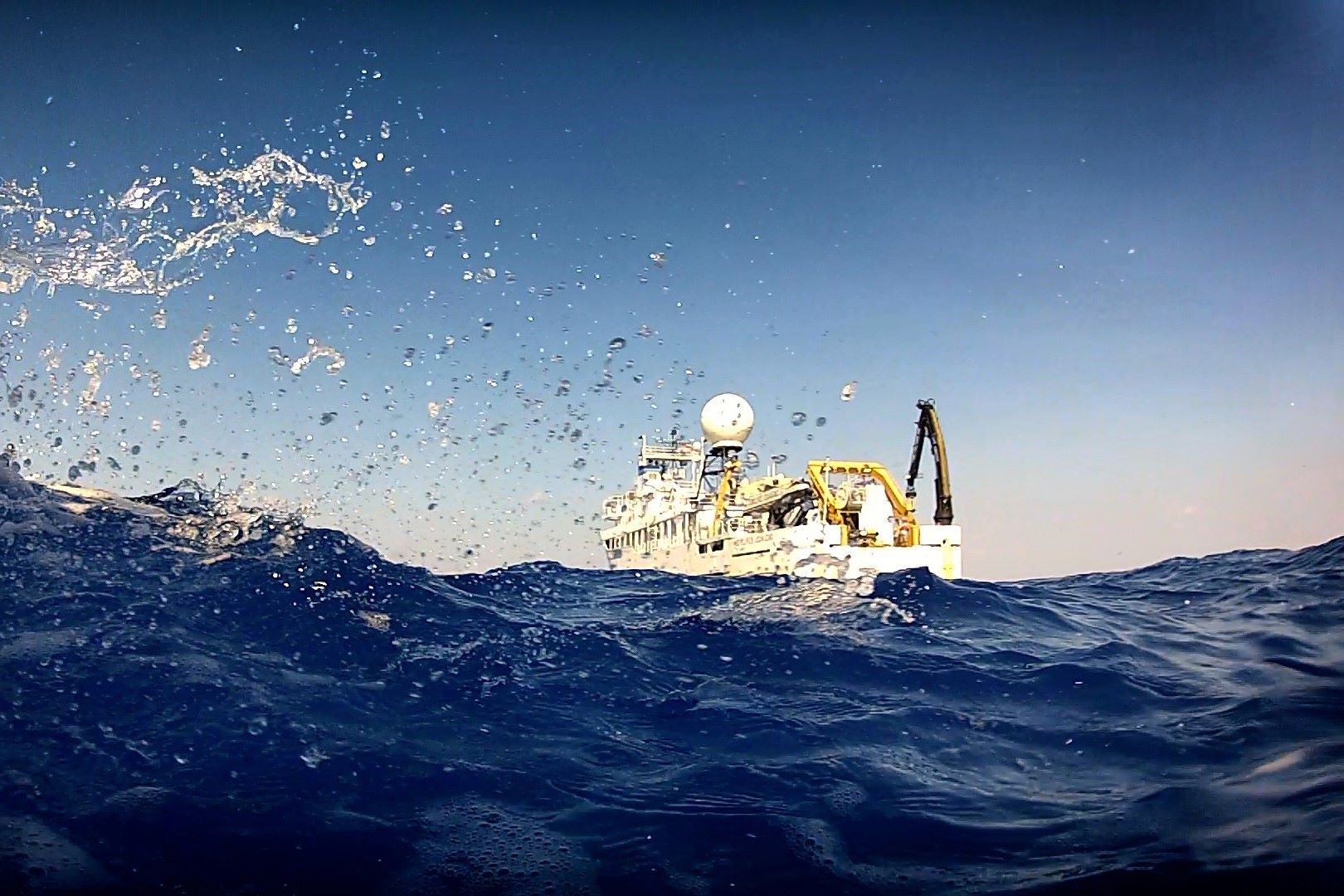
Ever wondered who keeps track of our oceans and atmosphere? Meet the National Oceanic and Atmospheric Administration (NOAA), a U.S. scientific and regulatory agency formed in 1970. Part of the Department of Commerce, NOAA's mission is to understand and predict changes in the Earth's environment, conserve coastal and marine resources, and provide critical services for the economy and public safety. With roots dating back to Thomas Jefferson's 1807 Survey of the Coast, NOAA supports over one-third of the U.S. GDP. From weather forecasts to marine conservation, NOAA's work impacts daily life and future planning. Dive into these 50 fascinating facts about NOAA!
Key Takeaways:
- NOAA, formed in 1970, plays a vital role in understanding Earth's environment, managing marine resources, and providing crucial services for the nation's economy and public safety.
- With a modest budget, NOAA's 11,833 employees and innovative technologies support public safety, climate research, marine conservation, and environmental enrichment.
Formation and Mission of NOAA
The National Oceanic and Atmospheric Administration (NOAA) is a key player in understanding and managing the Earth's oceanic and atmospheric conditions. Let's dive into some fascinating facts about this vital agency.
- Formation: NOAA was officially formed on October 3, 1970, following the Reorganization Plan No. 4 proposed by President Richard Nixon.
- Mission: NOAA's mission is to understand and predict changes in the Earth's environment, conserve and manage coastal and marine resources, and provide critical services for the nation's economy and public safety.
- Predecessor: The Environmental Science Services Administration (ESSA) was NOAA's most direct predecessor, absorbing several scientific agencies in 1965.
- Department of Commerce: NOAA is part of the Department of Commerce due to a feud between President Nixon and his interior secretary over Vietnam War policy.
Historical Significance and Budget
NOAA has a rich history and operates on a surprisingly modest budget given its extensive responsibilities.
- Oldest Civilian Science Organization: NOAA includes the oldest civilian science organization, established by Thomas Jefferson in 1807 as the Survey of the Coast.
- Services Supporting GDP: NOAA's services support more than one-third of the U.S. Gross Domestic Product (GDP), providing critical information for maritime commerce and sustainable fisheries.
- Budget: NOAA's budget is equivalent to only a nickel a day for every American, yet its services have significant economic impacts.
Workforce and Research Focus
NOAA's dedicated workforce and research initiatives are crucial for advancing environmental understanding.
- Employees: As of 2021, NOAA had 11,833 civilian employees and 321 uniformed service members in the NOAA Commissioned Corps.
- Research Focus: NOAA's research enhances understanding of phenomena like tornadoes, hurricanes, climate variability, solar flares, and more.
Innovative Technologies and Services
NOAA leverages cutting-edge technologies to provide essential services.
- Innovative Technologies: NOAA develops innovative technologies and observing systems to improve its environmental products and services.
- National Weather Service (NWS): The NWS provides weather, hydrologic, and climate forecasts and warnings for the U.S. and its territories.
- NESDIS: The National Environmental Satellite, Data, and Information Service (NESDIS) manages the nation's operational environmental satellite system.
Marine and Coastal Management
NOAA plays a critical role in managing and conserving marine and coastal resources.
- NMFS: The National Marine Fisheries Service (NMFS) manages and conserves marine fishery resources under U.S. jurisdiction.
- NOS: The National Ocean Service (NOS) focuses on coastal zone management, marine protected areas, and ocean exploration.
- OAR: The Office of Oceanic and Atmospheric Research (OAR) drives NOAA's environmental products and services through research.
Operational Support and Historical Milestones
NOAA's operational support and historical milestones highlight its enduring impact.
- OMAO: The Office of Marine and Aviation Operations (OMAO) supports NOAA's operational needs with aircraft, ships, and other assets.
- Historical Significance: NOAA celebrates over 200 years of service, tracing its roots back to the Survey of the Coast established in 1807.
Environmental Intelligence and Decision-Making
NOAA provides critical environmental intelligence to support decision-making.
- Environmental Intelligence: NOAA is America's environmental intelligence agency, offering timely, reliable, and actionable information.
- Decision-Making Support: NOAA helps people, communities, businesses, and governments make smart decisions impacting society, the economy, and the environment.
Scientific Reach and Public Involvement
NOAA's scientific reach and public involvement are essential for its mission.
- Scientific Reach: NOAA's reach extends from the surface of the sun to the ocean floor, keeping the public informed of environmental changes.
- Public Involvement: NOAA engages with the public through educational programs, outreach activities, and public consultations.
International Collaboration and Climate Research
NOAA collaborates internationally and conducts extensive climate research.
- International Collaboration: NOAA works with domestic and international partners to provide accurate hurricane tracks and enhance global understanding of environmental phenomena.
- Climate Change Research: NOAA conducts extensive research on climate change, including its impacts on weather patterns, sea levels, and marine ecosystems.
Ozone Depletion and Fisheries Management
NOAA's research on ozone depletion and fisheries management is vital for environmental health.
- Ozone Depletion Research: NOAA focuses on understanding changes in the ozone layer and their environmental impacts.
- Fisheries Management: NOAA manages fisheries to ensure sustainable seafood production, setting catch limits and enforcing regulations.
Marine and Coastal Ecosystem Health
NOAA monitors and manages marine and coastal ecosystems to maintain their health.
- Marine Ecosystem Health: NOAA researches ocean acidification, temperature changes, and other factors affecting marine life.
- Coastal Ecosystem Health: NOAA focuses on coastal ecosystem health, including research on deep-sea thermal vents and coastal zone management.
Navigation Tools and Weather Forecasts
NOAA provides critical navigation tools and weather forecasts for public safety.
- Navigation Tools: NOAA offers nautical charts and the Air Gap system to ensure safe maritime commerce.
- Weather Forecasts: NOAA's weather forecasts help businesses, farmers, and homeowners make important decisions based on timely information.
Hurricane Tracking and River Forecasts
NOAA's accurate hurricane tracking and river forecasts save lives and protect property.
- Hurricane Tracking: NOAA's accurate hurricane tracks help save lives and reduce economic disruptions.
- River Forecasts: The National Weather Service (NWS) issues over 850,000 river forecasts annually, crucial for managing water resources and preventing flooding.
Severe Weather Warnings and Environmental Products
NOAA's severe weather warnings and environmental products are essential for public safety.
- Severe Weather Warnings: NOAA issues over 45,000 severe weather warnings annually, providing critical information during severe weather events.
- Environmental Products: NOAA develops a wide range of environmental products, including weather forecasts, nautical charts, and research data.
Scientific Collaboration and Public Education
NOAA collaborates with scientists and educates the public on environmental issues.
- Scientific Collaboration: NOAA works with scientists from various institutions to conduct research on environmental phenomena.
- Public Education: NOAA engages in public education through programs aimed at raising awareness about environmental issues.
Historical Preservation and Heritage
NOAA preserves historical data and documents, maintaining its rich heritage.
- Historical Preservation: NOAA preserves historical data and documents related to its predecessor agencies.
- Heritage: NOAA's heritage dates back more than 200 years, with roots in the Survey of the Coast established by President Thomas Jefferson.
Research Laboratories and Extramural Programs
NOAA operates research laboratories and supports extramural programs to enhance its research capabilities.
- Research Laboratories: NOAA operates several research laboratories across the country, including the Atlantic Oceanographic and Meteorological Laboratory (AOML).
- Extramural Programs: NOAA supports extramural programs involving collaborations with universities, research institutions, and other organizations.
Technological Advancements and Data Management
NOAA invests in technological advancements and manages extensive environmental datasets.
- Technological Advancements: NOAA invests in new observing systems and innovative technologies to enhance environmental monitoring and prediction.
- Data Management: NOAA manages extensive datasets related to environmental phenomena, including satellite data and weather observations.
International Partnerships and Climate Resilience
NOAA collaborates internationally and works towards climate resilience.
- International Partnerships: NOAA collaborates with international partners to address global environmental issues.
- Climate Resilience: NOAA provides tools and information to help communities prepare for and adapt to climate change.
Marine Conservation and Fishing Regulations
NOAA is involved in marine conservation and sets fishing regulations to ensure sustainable fisheries.
- Marine Conservation: NOAA protects marine mammals and endangered species, enforcing regulations and conducting research.
- Fishing Regulations: NOAA sets fishing regulations, including catch limits and closed seasons, to ensure sustainable fisheries.
Ocean Exploration and Coastal Zone Management
NOAA supports ocean exploration and manages coastal zones to protect natural resources.
- Ocean Exploration: NOAA explores deep-sea ecosystems and maps oceanic and atmospheric conditions.
- Coastal Zone Management: NOAA works with state and local governments to develop coastal zone management plans.
Public Safety and Environmental Enrichment
NOAA's services are critical for public safety and enriching life through science.
-
Public Safety: NOAA provides critical information during natural disasters like hurricanes, floods, and wildfires.
-
Environmental Enrichment: NOAA enriches life through science, offering timely, reliable, and actionable information to the public.
-
Project 2025: Despite proposals to abolish NOAA as part of Project 2025, the agency continues to play a crucial role in U.S. environmental and economic activities.
NOAA's Impact on Our World
NOAA, formed in 1970, plays a vital role in understanding and managing our planet's oceanic and atmospheric conditions. From predicting weather and tracking hurricanes to managing fisheries and conserving marine ecosystems, NOAA's work touches many aspects of our lives. Its services support a significant portion of the U.S. GDP, providing critical information that helps communities, businesses, and governments make informed decisions. With a budget that's just a nickel a day per American, NOAA delivers immense value through its research, technological innovations, and public safety efforts. Its reach extends from the sun's surface to the ocean floor, making it a cornerstone of environmental science and public safety. As we face challenges like climate change and natural disasters, NOAA's role becomes even more crucial, ensuring we have the knowledge and tools to navigate an ever-changing world.
Frequently Asked Questions
Was this page helpful?
Our commitment to delivering trustworthy and engaging content is at the heart of what we do. Each fact on our site is contributed by real users like you, bringing a wealth of diverse insights and information. To ensure the highest standards of accuracy and reliability, our dedicated editors meticulously review each submission. This process guarantees that the facts we share are not only fascinating but also credible. Trust in our commitment to quality and authenticity as you explore and learn with us.


